Lightweight construction, automation and robotics from Stade for sustainable & efficient aircraft production at SIAE 2023
Automated machining and assembly of large lightweight structures on a 1:1 scale
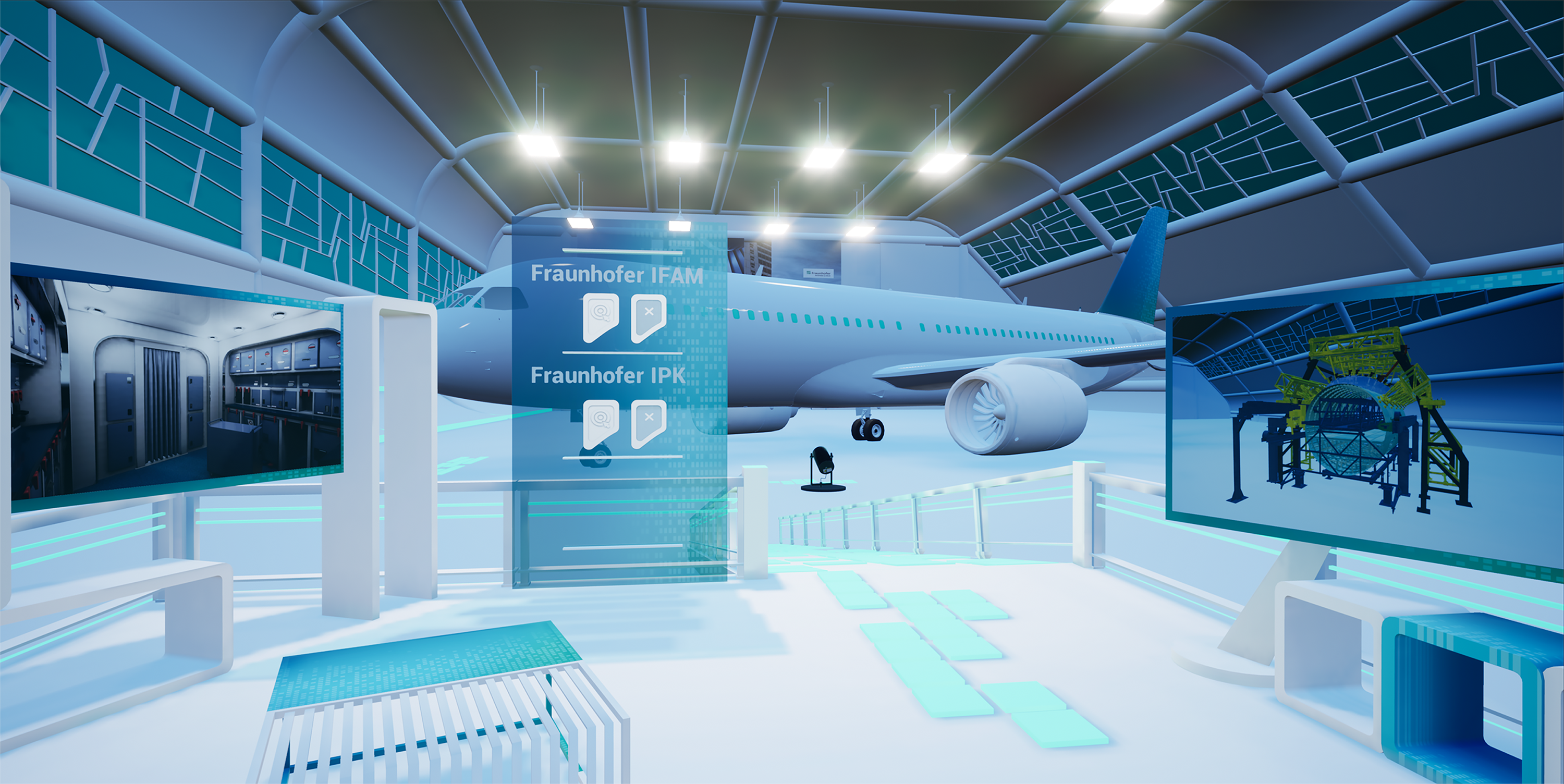
The Fraunhofer Institute for Manufacturing Technology and Advanced Materials IFAM in Stade, Germany, will present automation solutions for sustainable aircraft production at the International Aerospace Exhibition SIAE ("Paris Air Show") in Paris-Le Bourget from June 19 to 25, 2023, at the Fraunhofer AVIATION & SPACE booth on the joint booth of the German Aerospace Industries Association, BDLI (Hall 2C l Stand D357).
New, weight-saving materials and manufacturing processes not only increase efficiency and reduce costs, but in particular represent milestones on the way to climate-friendly flying: in a typical passenger aircraft, each kilogram saved reduces kerosene consumption by up to 120 kg per year. The Automation and Production Technology researchers provide insights into current application-oriented R&D activities – focused on machining and assembly of large lightweight structures made of various materials – which they realize on a 1:1 scale at the Research Center CFK NORD in Stade, Germany. They develop automated or semi-automated manufacturing solutions up to industrial scale.
- Assembly technologies for a lighter Clean Sky 2 aircraft fuselage of the future made of thermoplastic fiber-reinforced plastics (FRP)
- Lightweight robotics modular system for aircraft production
- Automated pre-assembly of CFRP integral frames
- Automated rudder hinge assembly in aircraft vertical tail planes
- Efficiency-enhancing flow-line manufacturing for large CFRP components
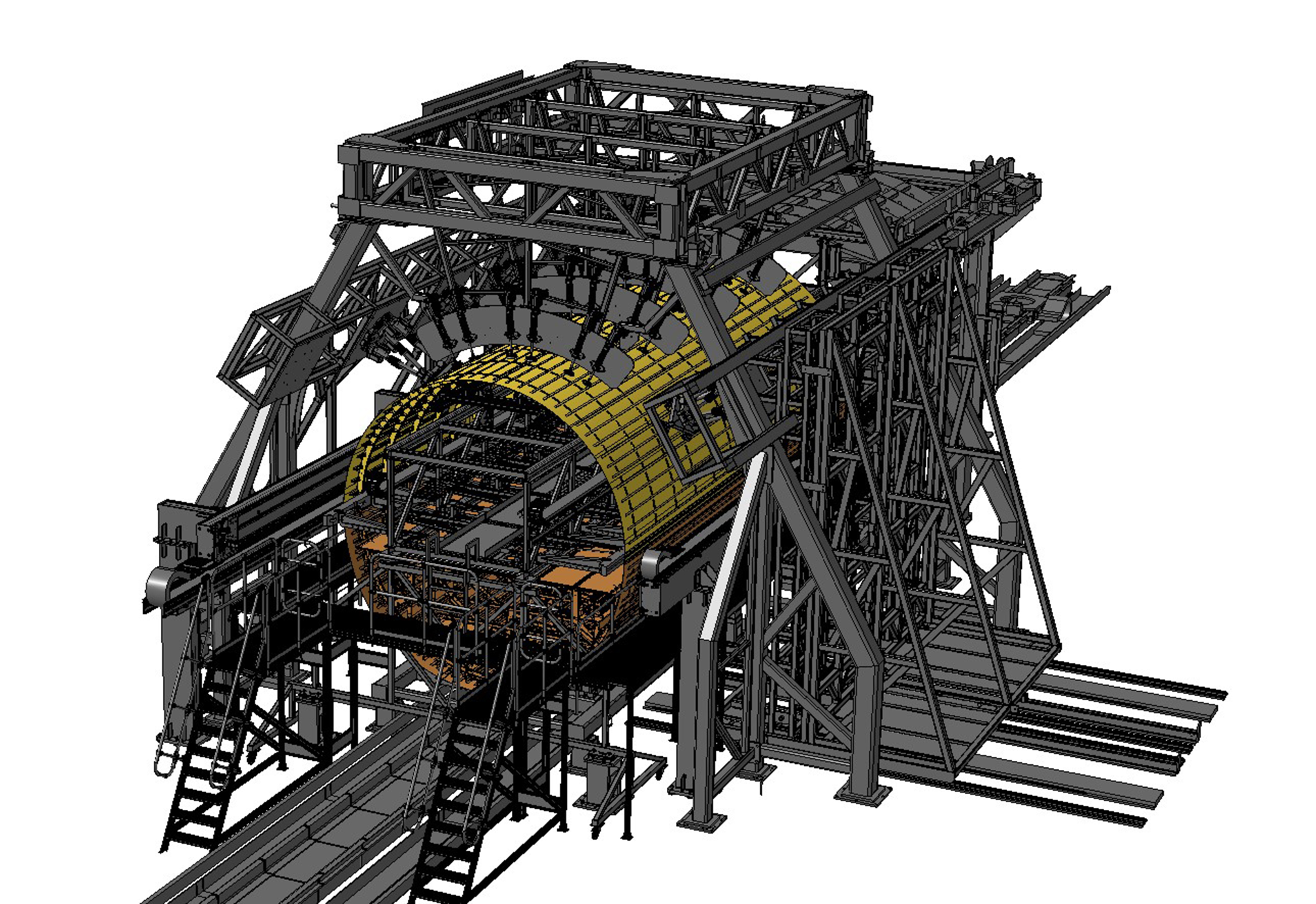
Clean Sky 2 – "MFFD" – An aircraft fuselage of the future – Assembly technologies for new fuselage designs with thermoplastic CFRP
In a virtual aircraft hangar, visitors of the SIAE 2023 will have the opportunity to individually explore the Clean Sky 2 "Multifunctional Fuselage Demonstrator" ("MFFD") using VR glasses, which is currently being built on a 1:1 scale at Fraunhofer in Stade. The significant weight reduction of the aircraft fuselage of the future results from a new design, which in turn is made accessible for this area of application by the use of thermoplastic fiber-reinforced composites for the first time worldwide.
Increasing demand for aircraft and the need to reduce CO2 emissions require new methods and technologies in the aircraft construction. For a significant increase in productivity on the one hand and environmental compatibility – through weight reduction – on the other, there is a promising approach: the combination of thermoplastic, carbon fiber-reinforced plastic (CFRP) aircraft structural elements, fairing parts and cabin system elements into an integrated structural module. The aim is to carry out the equipping of the fuselage shells before closing the fuselage, thus saving considerable effort and costs. To achieve this, it is necessary to replace the drilling and riveting carried out up to now with a dust-free welding joining process.
The Clean Sky 2 "Multifunctional Fuselage Demonstrator" ("MFFD") is investigating the technological and economic feasibility of welding-based assembly of highly integrated, thermoplastic aircraft fuselage structures. This includes the construction of a 1:1 scale demonstrator with various joint designs and welding processes in Stade, which is being developed together with international project partners. In addition to the welding process, the focus is on automated manipulation and assembly of the structures while maintaining the highest tolerance requirements.
Further information: https://s.fhg.de/iG5
Funded by: Clean Sky 2 | European Union
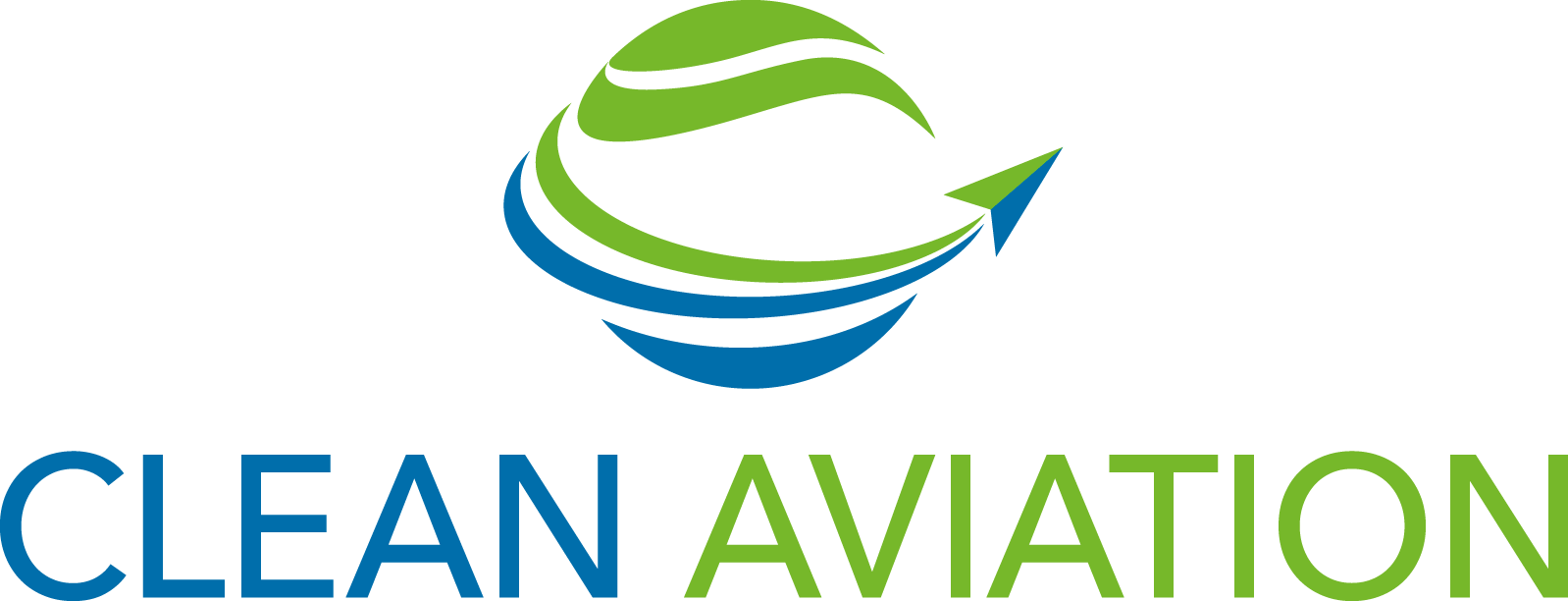

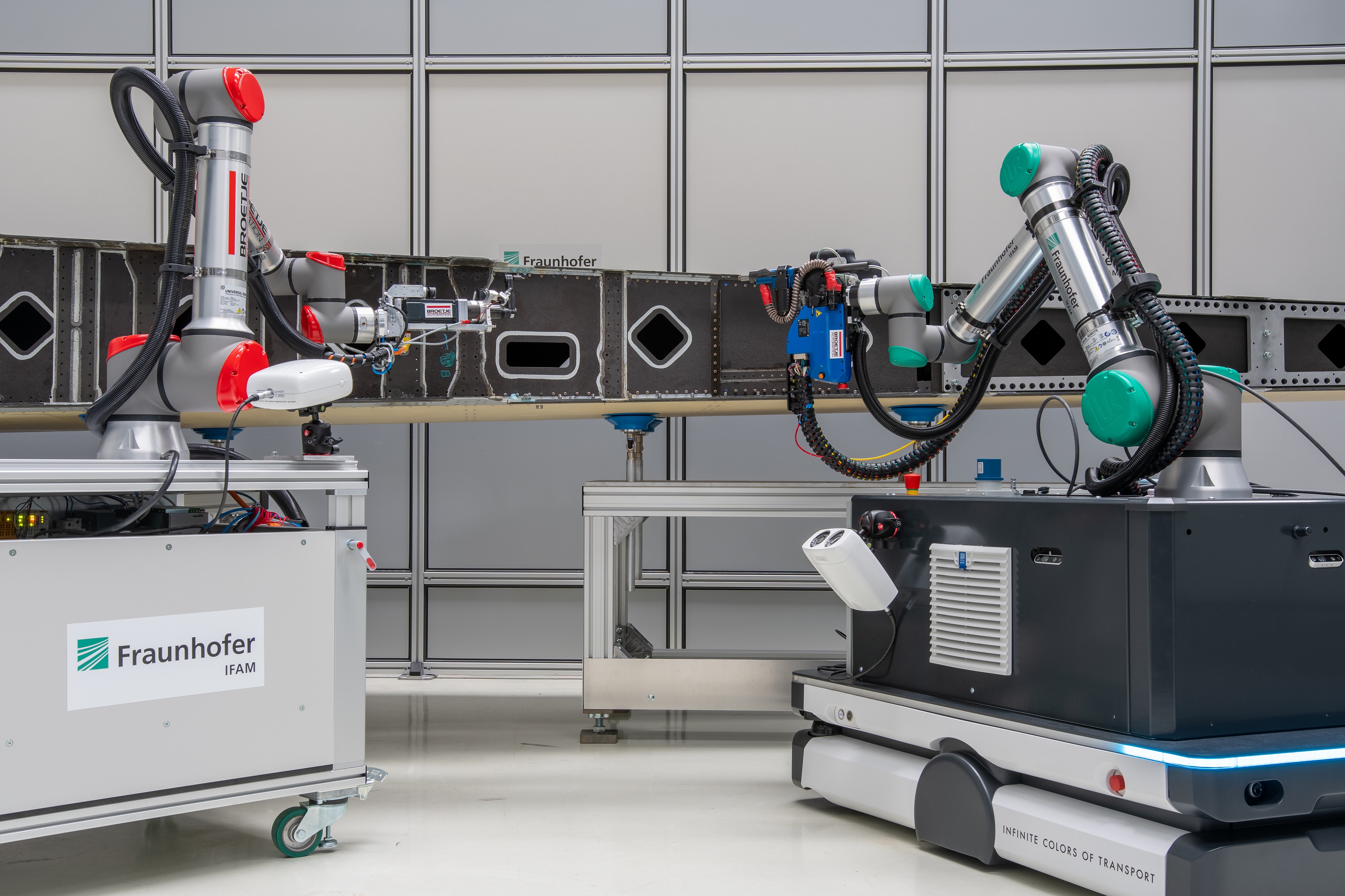
Modular system with potential – Cognitive production with modular lightweight robotics
In the joint project "Cobots, Humans and Machines from Lower Saxony" (CoMMaNds 2), the researchers at Fraunhofer IFAM in Stade, together with their project partners, developed mobile lightweight robot systems for the efficient and sustainable assembly of aircraft components.
The aim of the R&D activities was to create a modular lightweight robotics toolkit that makes it possible to configure and reconfigure lightweight robot systems with reduced time and financial effort. This allows not only new systems to be projected at lower cost and with shorter delivery time, but also existing systems to be more easily adapted to changing conditions. The system modeling as well as the standardized interfaces are based on the open data exchange standard OPC UA and the standardized sequence control consists of capability-based software modules. Thus, a "Plug & Produce" as well as a fast and simple generation of control codes is achieved in production practice.
Other important components of the project are human-machine interfaces, which were realized using Augmented Reality (AR) technologies, among others, technologies for fast and reliable referencing, mobilization of the robots, as well as development of some aerospace-related processes.
The developed technology components of the modular system have already proven themselves in exemplary applications. For example, the crimping of rivets on an aircraft fuselage shell as well as the drilling and screwing of riveted joints were successfully carried out on a 1:1 scale using the example of an aircraft vertical tail plane box.
Funded by: Niedersächsisches Ministerium für Wirtschaft, Verkehr, Bauen und Digitalisierung

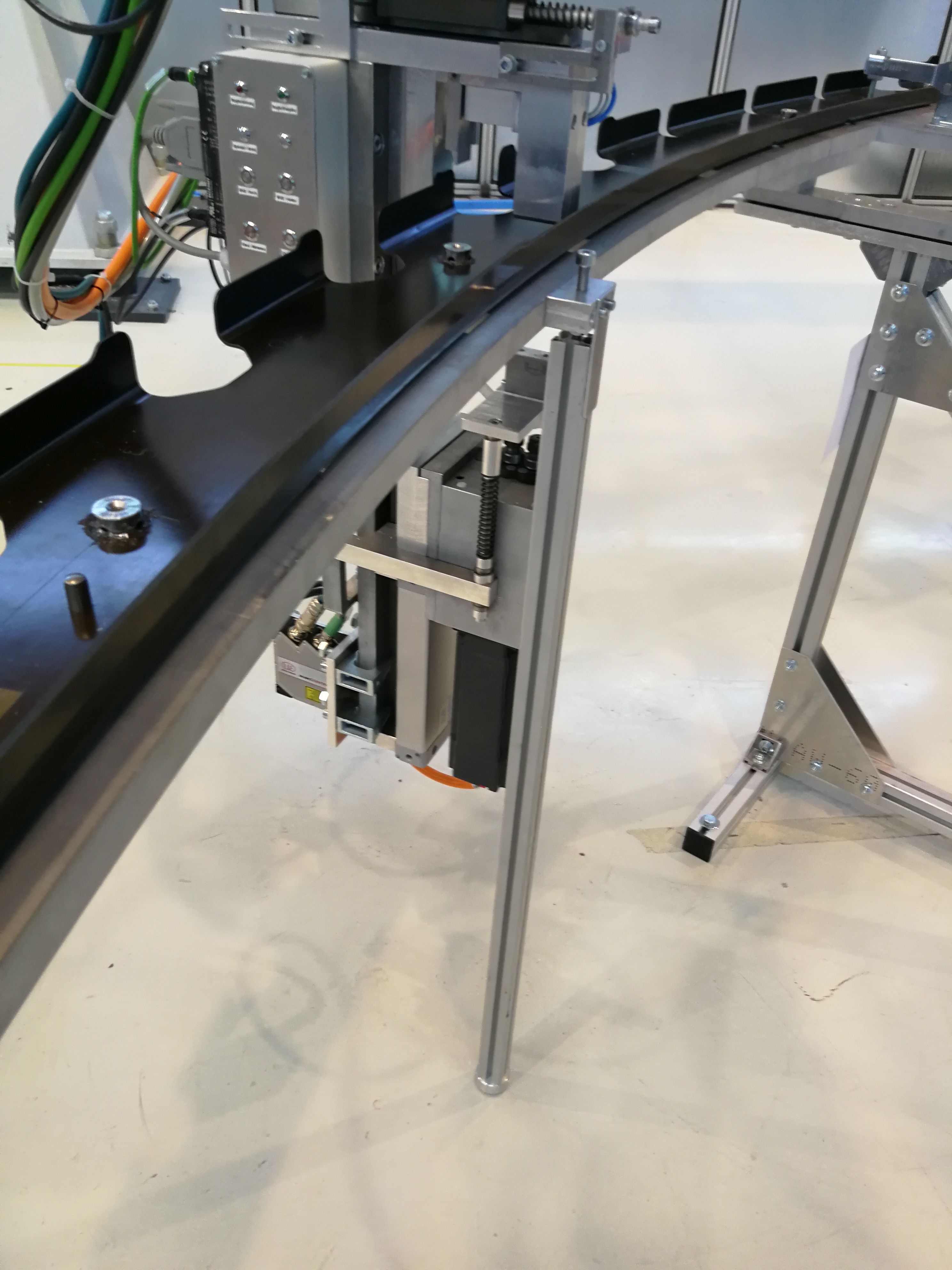
Positioning and drilling end-effector for automated, high-precision and quality-assured pre-assembly of CFRP integral frames
The automation solutions developed in the "Impuls" subproject "Tempo" ("Technologies for the efficient assembly and production of CFRP fuselage components") by Fraunhofer IFAM in Stade together with project partners have already been validated in a near-series environment on a full-scale prototype.
The positioning and drilling end effector newly developed for a portal system to automate the pre-assembly of stiffening elements (cleats) on CFRP integral frames for the manufacture of aircraft fuselages enables production rate increases both with constant quality and at lower cost. In addition, the previous manual production requires more process steps.
The positioning and drilling end effector fulfills the tasks of receiving various cleats, positioning them on different integral frames and simultaneously double drilling both components. The compactly built end effector can be picked up by the portal system used as well as by standard industrial robots. It can be controlled via a system PLC and receives its global position data from imported CAD data of the components. The new assembly situation is adapted via a quick upstream measurement using a laser tracker. The innovative technology enables a reliable process and high positioning accuracy. The measuring technology integrated in the end effector documents exactly the required contact pressure as well as many other parameters for monitoring the optimal conditions for the pre-assembly of the cleats on the integral frame. This guarantees online quality assurance.
Video and further information: https://s.fhg.de/s4X
Funded by: Federal Ministry for Economic Affairs and Climate Action
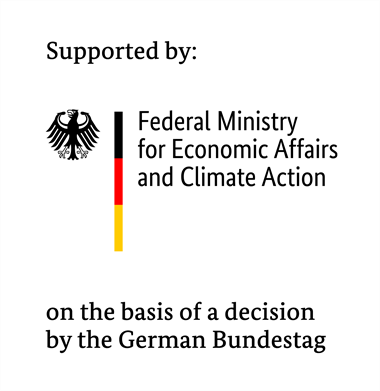
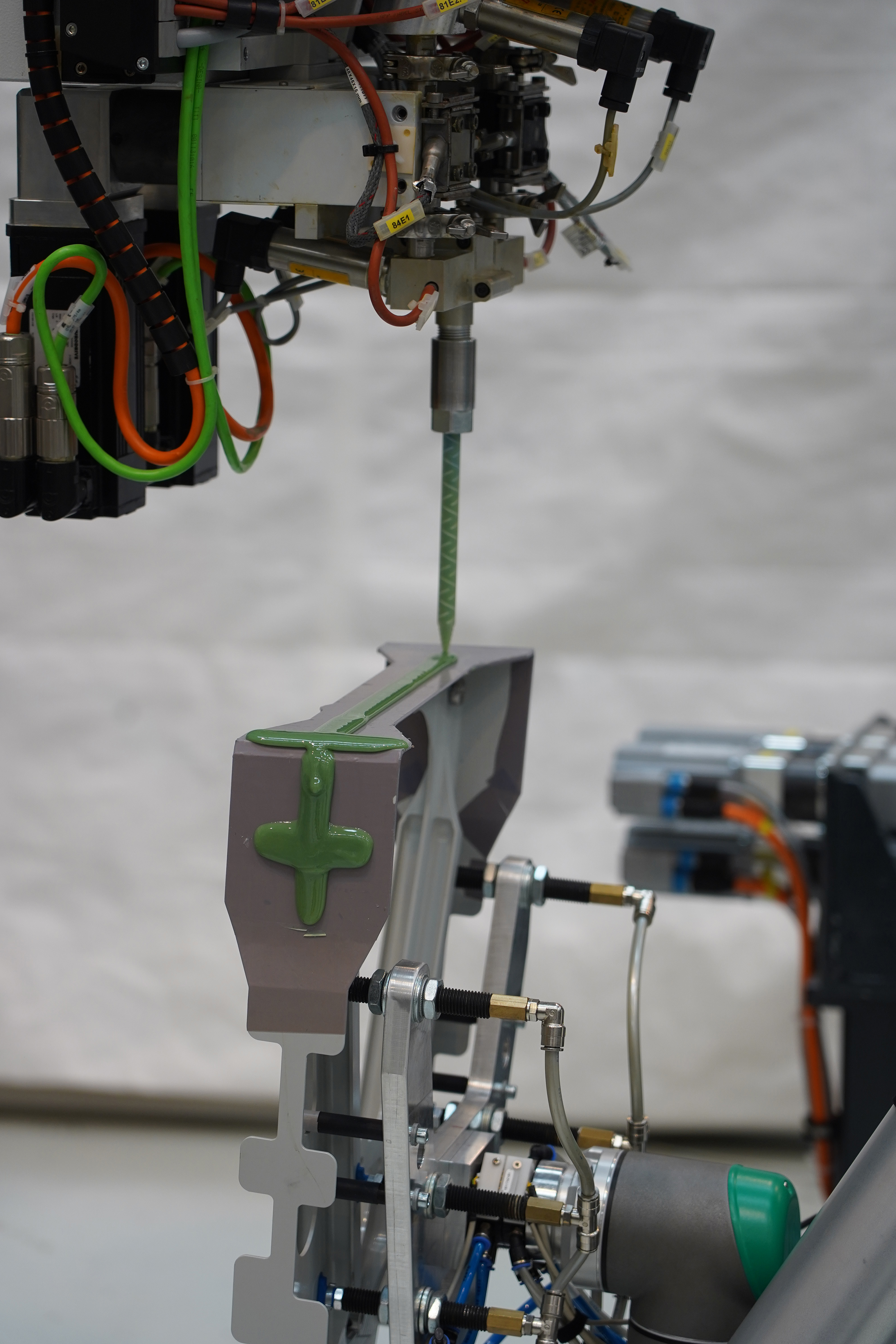
Agile production technologies for CFRP box structures – Automated rudder hinge assembly in aircraft vertical tail planes
By using agile production technologies for CFRP box structures, researchers at Fraunhofer IFAM in Stade optimized the production processes of aircraft vertical tail planes in the joint project "FastFlexMont 2".
With the aim of no longer interrupting the assembly of rudder hinges to the VTP box by long waiting times, Fraunhofer IFAM experts and partners have developed application and curing of shim material (gap-filling material) as a parallel process. Automated and digitally networked processes enable volume-accurate metering and application as well as precise shaping and edge smoothing of the shim. Only after the gap filling has cured, the completely shimmed rudder hinge is inserted into the vertical stabilizer.
Thus, in addition to agile manufacturing, the parallelization of work steps makes it possible to reuse technical resources and consequently increase productivity while at the same time reducing costs.
Further information and video: https://s.fhg.de/8u5 and https://s.fhg.de/zL5
Funded by: Federal Ministry for Economic Affairs and Climate Action

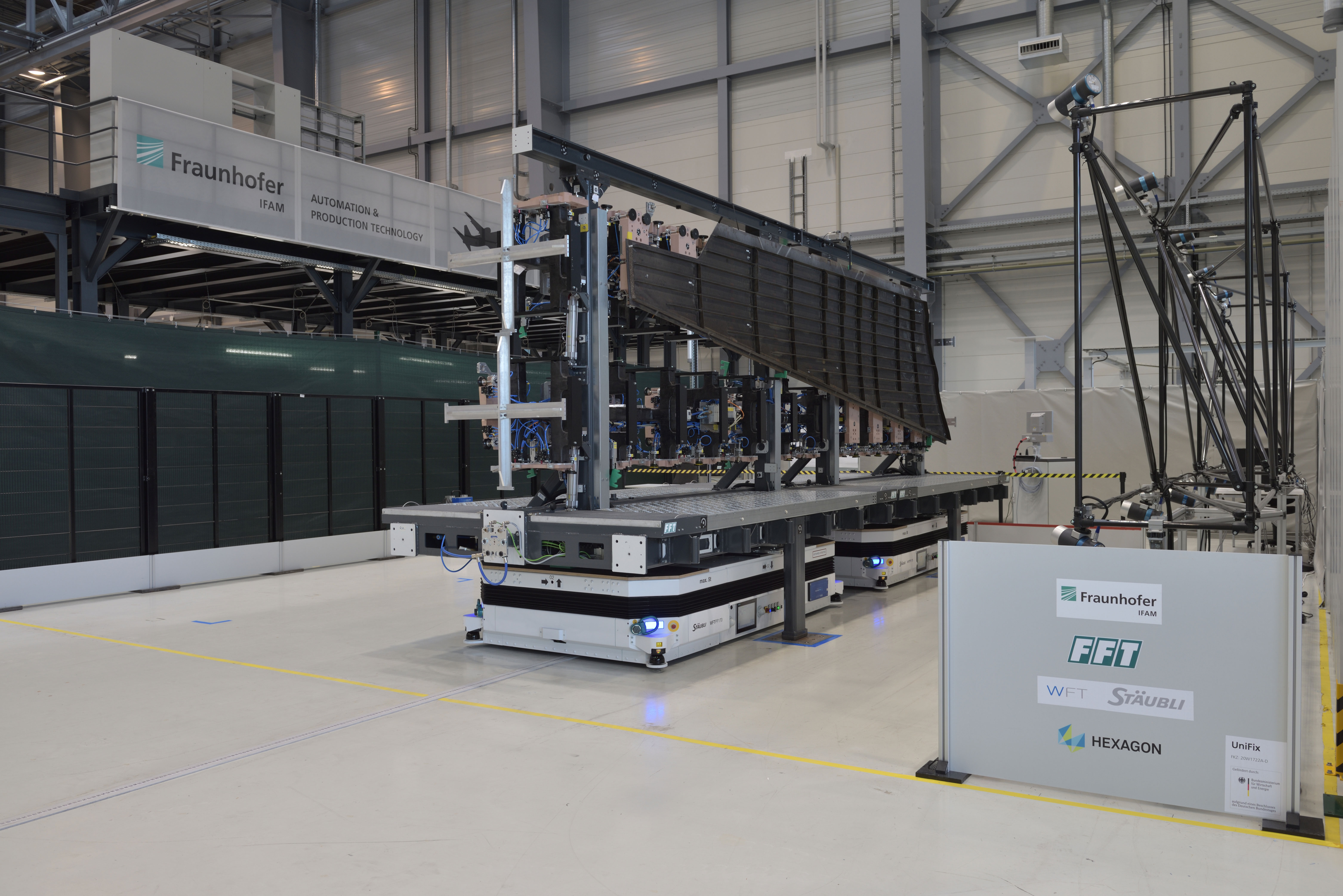
Efficiency-enhancing flow-line production of large CFRP components – Trend-setting mobile holding fixture for flexible pick-up, alignment, and transport of components
A further milestone with regard to agile production technologies – the new mobile holding fixture developed by Fraunhofer IFAM in Stade together with project partners can flexibly hold various large components, such as aircraft tail planes or landing flaps, in different types up to eight meters in length, align them precisely and sustainably, and transport them.
This joint research project ("UniFix"; "Universal mobile component clamping and fixing device for the processing of fiber composite structures") is also all about weight-reducing large CFRP structures on a 1:1 scale for aircraft construction. Focused on machining processes in the production flow, this holding fixture is able to significantly relieve a machining line of time-consuming, non-value-adding secondary activities by passing through various process stations in advance with the optimally and precisely aligned large components, at which preparatory work can be carried out in parallel and simultaneously.
This flow-oriented production makes it possible to reduce throughput times and thus increase productivity, efficiency and cost-effectiveness, and consequently competitiveness in the international market. The advantages of flow-oriented manufacturing lie primarily in the reduction of manual handling operations and non-productive time. In addition, there are increases in efficiency through specialization of the individual plants, reduced throughput times due to harmonized cycle times, as well as an associated reduction in buffer stocks and faster reaction to process deviations.
Further information and video: https://s.fhg.de/89K
Funded by: Federal Ministry for Economic Affairs and Climate Action

Further information
Website
www.ifam.fraunhofer.de/en/stade
Flyer
Trade fair
Find out more – visit us at the International Aerospace Exhibition SIAE in Paris-Le Bourget ("Paris Air Show"), June 19-25, 2023, Hall 2C l Booth D357, (Fraunhofer AVIATION & SPACE booth at the BDLI joint booth).
Photos
© Fraunhofer or Fraunhofer IFAM, but can be published in reports about this press release. Download here: www.ifam.fraunhofer.de/en/Press_Releases/Downloads.html
Photos and PDF for Download
Last modified:
 Fraunhofer Institute for Manufacturing Technology and Advanced Materials IFAM
Fraunhofer Institute for Manufacturing Technology and Advanced Materials IFAM